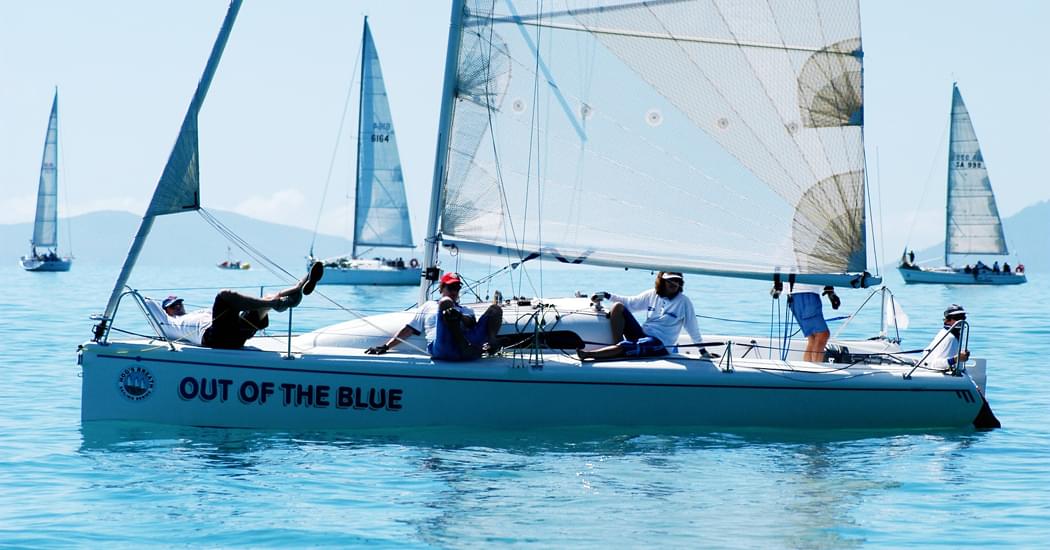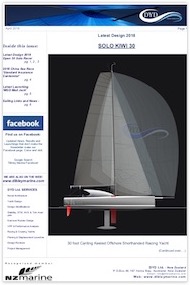
Dibley April 2018 Newsletter
04 18 Topic: Dibley Newsletter
The latest design to come off our drawing board is a 30-footer canting keeled offshore racing yacht specifically designed for solo or shorthanded sailing. This category of racing is gaining a huge following worldwide. There is a group of NZ locals who want to grow the numbers and enter races such as the Solo Tasman, the Round North Island and the Round New Zealand races—the latter two run under SSANZ (Shorthanded Sailing Association of New Zealand). There are a couple of separate groups going down different design paths but we have pulled in a team that has the experience in both sailing solo as well as designing for offshore performance.
Twin Rudders, Canting Keel, and Twin Daggerboards create the appendage package that counter act the powerful and well-balanced square-top sail plan. A fixed prod to handle the Code Zero’s (but also incorporates a protruding prod for gennakers) still allows the yacht to fit into a 10-metre berth which was a key requirement in the design brief.
All sailing and appendage controls are done from the confines of the cockpit. A central pod off the main bulkhead allows all halyards and a few control lines to be handled either side of the port and starboard companionways. This area has great cockpit cover in the form of a hard dodger, being an extension of the main cabin top. Some of these races are over multiple days, non-stop, where fatigue becomes a major factor to manage. This design will be fast and as we’ve seen from the recent Volvo and Vendee Globe round the world races, most importantly there is cockpit cover from wind and waves, ensuring comfort and protection from the elements.
READ MORE
Twin Rudders, Canting Keel, and Twin Daggerboards create the appendage package that counter act the powerful and well-balanced square-top sail plan. A fixed prod to handle the Code Zero’s (but also incorporates a protruding prod for gennakers) still allows the yacht to fit into a 10-metre berth which was a key requirement in the design brief.
All sailing and appendage controls are done from the confines of the cockpit. A central pod off the main bulkhead allows all halyards and a few control lines to be handled either side of the port and starboard companionways. This area has great cockpit cover in the form of a hard dodger, being an extension of the main cabin top. Some of these races are over multiple days, non-stop, where fatigue becomes a major factor to manage. This design will be fast and as we’ve seen from the recent Volvo and Vendee Globe round the world races, most importantly there is cockpit cover from wind and waves, ensuring comfort and protection from the elements.
READ MORE



